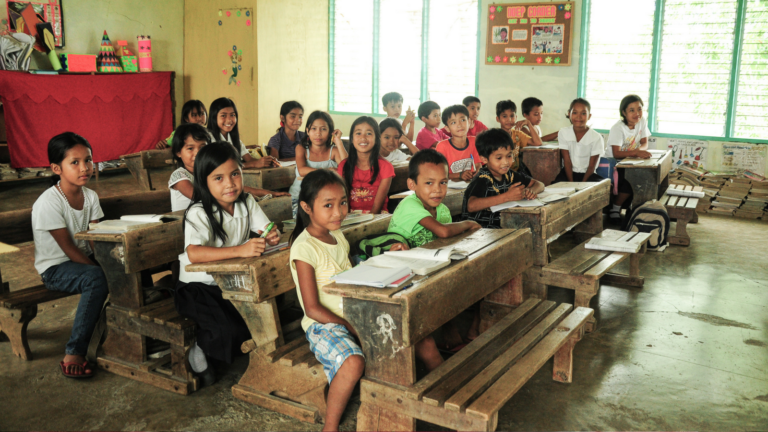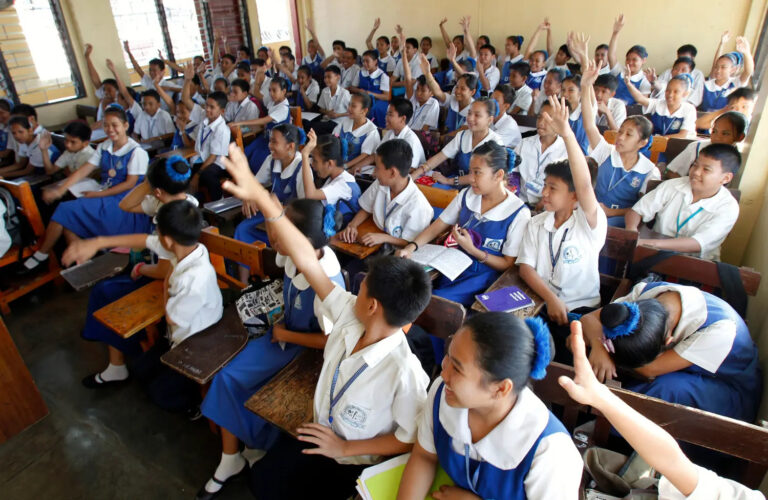It’s that time again, the beginning of a new school year. Whether you are still in school or far past your graduation, we are all familiar with the feelings of starting a new school year. Amidst all the nerves of trying to pass your first tests and quizzes and nostalgia for the summer that passed all too quickly, did you have a sinking feeling that your school may not be well equipped to facilitate you? Have you ever wondered if your school would have electricity or fresh running water this year? Has the thought ever crossed your mind that your school might not have enough teachers or that your class has too many students? Have you ever worried that the school building itself is not safe to be in? Have you ever worried that you may be unable to enroll in school this year?

For many students in the Philippines, these questions are their reality. According to Mong Palatino, a former Philippine legislator: “…Out of 327,851 school buildings in the country:
- only 104,536 are in good condition
- 100,072 school buildings need minor repairs
- 89,252 school buildings require major repairs
- 21,727 school buildings are set for condemnation.” Reference Here
On top of this, Medium reporter John Paul Blando reported in 2023 that around 5,000 schools in the Philippines have no electricity and around 10,000 have no access to potable water. (Blandio, 2023 – Reference Here)
As if things could not get worse, Trinity University of Asia reported that in the academic year of 2020-2021, close to 4 million Philippine students could not enroll in school at all. (Trinity University of Asia – Reference Here)

Our schoolhouse built for the children in the Manaoag orphanage.
Many of us reading these statistics today might be asking ourselves,
“How did it get this bad for the youth in the Philippines?”
The answer is shockingly simple yet hard to resolve – insufficient funding. The Philippines is considered a third-world country or a developing economy. There are high rates of poverty in the tiny archipelago country. While larger urban areas (like the capital city, Manila) may enjoy the luxury of having the basic necessities and even some extracurriculars and technology, rural areas (most areas in the Philippines) face large resource deficits. These deficits include a lack of basic necessities such as water, electricity, safe school buildings, and technology. More devastatingly this lack of sufficient funding has led to poor quality of education. The Philippine education system currently runs on an outdated curriculum that fails to train the youth to meet the ever-changing needs of their already struggling society. The focus on teaching methods rests on memorization rather than critical thinking and creativity. On top of this, because there is a lack of funding there is a large deficit of capable teachers. While the ideal student-to-teacher ratio rests at 30 students to one teacher, the Philippines is currently at 40 to 55 students per teacher ratio (Trinity University of Asia). How is the youth of the Philippines supposed to thrive and provide for the needs of their country if their country cannot provide for them? More importantly, how do these unfortunate statistics affect the most vulnerable of youth, orphans?

Unfortunately, of the nearly 4 million students who could not be enrolled in school in the academic year of 2020-2021, around 50% were reported to belong to families within the bottom 30% of the income distribution (Trinity University of Asia). If this statistic is true, where does that leave the nearly 2 million orphans who have no families, live on the streets, and most likely
went unreported on any of these statistics? Who is their advocate to ensure they get the education they desperately need for a brighter future?
While the Philippine education crisis is not a problem that can be solved overnight, we can alleviate some of the burden by ensuring that the orphans of the Philippines have the tools they need to be successful in life. At the Philippine Orphanage Foundation, we are dedicated to not only providing them with safe shelter but also the faith-based education they need until they are matched with a loving family to adopt them.

A special “Maraming Salamat” to Paige Slatton, one of our contributing bloggers!
Palatino, Mong. “The Philippines’ Basic Education Crisis.” – The Diplomat, The Diplomat, 22 Feb. 2023, Reference Here
Admin. “Philippine Education Today: Challenges, Opportunities.” Trinity University of Asia, 10 June 2024, Reference Here
Blando, John Paul. “Rebuilding the Foundation: Combating the Challenges of the Philippine Education System.” Medium, Medium, 26 Nov. 2023, Reference Here

